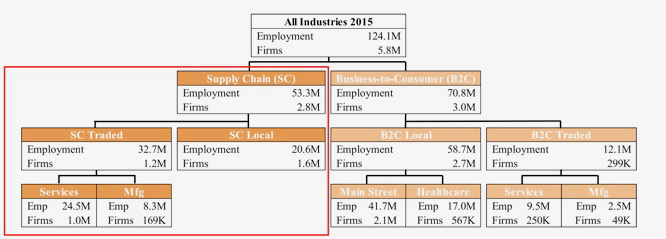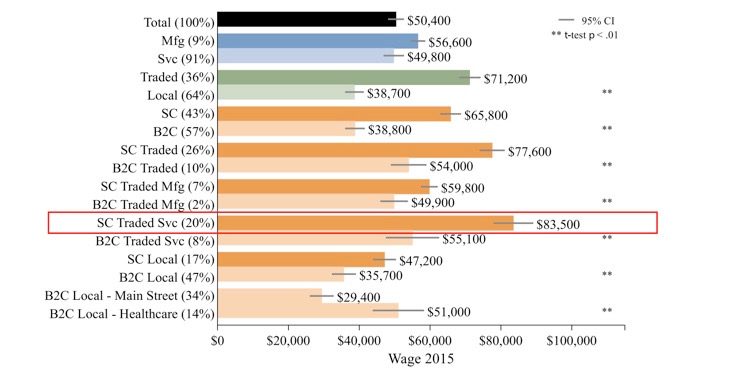Recently I have been working on a book about the “supplychainification” of economies around the world – If you have never heard about the word “supplychainification”, no worry. I have not either. My collaborators and I invented it, and I will explain it in a separate article. In here, I answer a even simpler (but actually not simple) question: How large is the supply chain economy?
Ask the same question but from an employment perspective: There are roughly 150 million jobs in the US, give or take. But how many of them are supply chain related?
To answer that question, we need to define what the “supply chain economy” is. I recently read a very interesting paper published in Research Policy by Delgado and Mills that offers a new framework that give me a fresh look at things.
In the paper, the authors refers to a supply chain economy (SCE) as “suppliers of goods and services to businesses and the government.” In other words, if a company sells directly to consumers, then it is not part of the SCE; But if it sells to another company (or the government), then it is part of the SCE.
This definition makes sense if you think from a consumer perspective. The ultimate goal of an economy is to serve its people – the consumers. Those businesses that are serving consumer directly are categorized as B2C. Any other businesses that are NOT directly facing consumers could therefore be labelled as part of a supply chain.
This definition differs from that of the supply chain of an individual firm. Instead, it focuses on businesses that sell to other businesses (in contrast with those selling to consumers) or the government. As an example, companies such as Boeing, Intel, and GE are all part of the SCE, because their main business are to sell to other businesses. But Walmart or Target will not be in the SCE because they mainly sell directly to consumers.
The authors also further divide SCE into 3 sub-categories:
- SC traded manufacturing: e.g., semiconductor manufacturing
- SC traded services: e.g. engineering services
- SC local industries: e.g. security guards and patrol services
With those classification, the authors were able to show that in 2035 the SCE accounted for 43% of all US jobs. That is a rather large number!

They also find that SC traded service has 3 times as many jobs as those in SC manufacturing (20% vs 7% of US employment). Moreover, the SC traded services has the highest wages and the highest STEM occupations.
So where are the good jobs?
- software
- business services
- transportation and logistics
- marketing
- design
- energy services
- R&D
- financial services
- …
The authors provides a good visual on this too.

Source: Delgado and Mills (2020)
I am very happy to read this paper. It confirms that supply chains are large in our economies, and that they have a bright future in providing good employment.